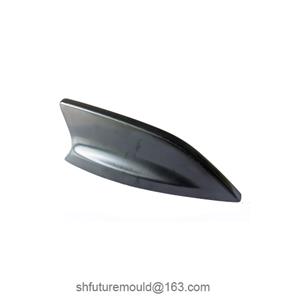Impacts and Countermeasures of Excessively High or Low Temperatures in PPS Injection Molding
In the injection molding process of PPS (Polyphenylene Sulfide), the molding temperature plays a crucial role in product quality and processing efficiency. Both excessively high and low temperatures can cause various issues. The following details the impacts and corresponding countermeasures.
I. Impacts and Countermeasures of Excessively High Temperatures
1. Impacts
Material Degradation:
When the temperature is too high, PPS may undergo thermal degradation, resulting in volatile substances or odors. This can lead to reduced mechanical properties or even product rejection.
Surface Defects:
Overheating of the melt can cause surface defects such as rough textures, bubbles, or flow marks.
Mold Damage:
High temperatures may cause mold thermal expansion, reducing dimensional accuracy and damaging the mold’s surface coating or materials.
Processing Instability:
Excessively low melt viscosity and high flowability can lead to overfilling and flash formation.
2. Countermeasures
Optimize Barrel Temperatures:
Maintain barrel temperatures within the recommended range (typically 280°C–320°C) based on PPS characteristics. Adjust the feed, compression, and metering zones incrementally to avoid localized overheating.
Adjust Mold Temperatures:
Reduce the mold temperature to a reasonable range (typically 120°C–160°C) to minimize defects caused by high temperatures.
Extend Cooling Time:
Increase cooling time to ensure the melt fully solidifies in the mold, preventing flash issues.
Regular Equipment Maintenance:
If degradation residues are found on the screw or mold, clean them promptly to avoid defective products.
II. Impacts and Countermeasures of Excessively Low Temperatures
1. Impacts
Insufficient Melt Flowability:
Low temperatures increase melt viscosity, reducing flowability and possibly causing incomplete filling or short shots.
Poor Crystallization:
Low temperatures may decrease material crystallinity, resulting in reduced mechanical and thermal performance.
Pronounced Weld Lines:
Poor melt flowability can make weld lines more visible, compromising appearance and strength.
Increased Mold Cavity Stress:
Faster cooling at low temperatures can introduce significant internal stresses, leading to warping or cracking.
2. Countermeasures
Increase Barrel Temperatures:
Adjust barrel temperatures to the recommended range for PPS to ensure the melt achieves optimal flowability.
Optimize Mold Temperatures:
Increase mold temperatures to slow the cooling rate and improve material crystallinity, thereby enhancing product performance.
Increase Injection Speed and Pressure:
Higher injection speed and pressure can help the melt overcome viscosity resistance and fill the mold cavity more effectively.
Reduce Cooling Time:
Within the constraints of product solidification, reduce cooling time to prevent excessive internal stress caused by low-temperature cooling.
III. Comprehensive Optimization Strategies
Regular Equipment Maintenance:
Inspect heaters, temperature control devices, and cooling systems to ensure precise temperature regulation.
Experimentally Determine Process Parameters:
Since different PPS grades may have slightly different temperature ranges, conduct experiments to determine the optimal processing temperature.
Use High-Quality PPS Materials:
Select PPS materials with better thermal stability to reduce sensitivity to temperature fluctuations.




